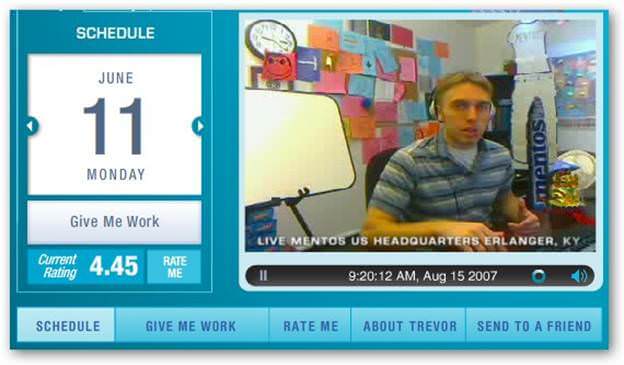
The Future of Digital Marketing is personalization
E-marketing is a few terms utilized to describe the process of promoting a product or service over the internet with the best marketing companies in Egypt.
More

When you don't appreciate your SEO efforts with your content marketing, you aren’t going to get the best results. Because of this, it pains me to see other content marketers making these simple and easy-to-fix mistakes in their campaigns.
Last month, I looked at five common SEO mistakes that content marketers make. Today, in part two, I explore five more costly SEO mistakes to avoid so that you can take your content marketing farther than ever before.
In a perfect world, great content would spontaneously yield loads of great backlinks. In the real world, however, you need to promote your content to the right audience.
The best way for people to see great content is to generate buzz about it. In part one, we discussed utilizing a power user to start the viral spread to get your content noticed by the linker. Another approach is to contact the linker directly, via email.
Fair warning: It isn’t as easy as sending out bulk emails to the effect of, “Hey, I think your readers would appreciate the following.” Successful influencer outreach breaks down into three stages:
Read more about The importance of publicity and SEO
Ideas can come from looking at social media users that have a big presence in your niche, they can be found on social news sharing sites, or the method I prefer, crawling with a tool.
I personally love Pitchbox. It’s a crawl and outreach automation tool that allows you to scale outreach massively without sacrificing a human touch. You create the template for your outreach campaign and then fill in the in-depth personalization fields to make each power user interaction incredibly personal. Pitchbox even allows you to look at their site link metrics, as well as social information about them.

Here’s where you are different from the other guy: You aren’t just asking for a favour and then exiting once the value to you is over. You realize that this power user likely has their busy schedule, their fans and readers to think about and plenty of other people asking them for links. You have to figure out what you can offer that will set you apart.
This obviously shouldn’t come in the form of link trades, link buys or anything else that may come off needy or desperate. Instead, let them in on why you are an awesome guy to have in their community. Don’t think of these power users as “transaction partners,” but long-term business peers.
This value could be something like giving them an awesome idea for a post based on what you noticed some of their commenters saying or a hint into a site fix that they may want to check out, or asking them advice about an industry conference. The “ask” for the link, ideally, won’t even come into play until a few interactions in.
It’d be ideal if you could meet up with them by this time at an industry conference or a local meetup, or perhaps attend an event they are putting on. By now, you’ll know the kind of thing they want to provide to their audience — and you can construct it.
After you initially get that link that sends your viral campaign out into the stars, keeps up your communication with your power user network. Send them info that could be great for a new blog post on their site, show them a hilarious infographic you saw — the relationship will pay off.
I see keyword research as one of the most often missed steps of content marketing, and one of the most often missed opportunities. For example, a clothes-shopping audience doesn’t search for “men’s apparel” or “men’s clothier,” they search for “men’s clothes” or “men’s fashion.” So, in all probability, they won’t see content nearly as much if it’s not targeted at the correct keywords. Using keyword tools like Google AdWords Keyword Tool and Moz Keyword Explorer should be required for all your content writers. This will not only provide insight on how your audience talks, but give you crucial intel when developing new content.
I like Soovle for brainstorming and campaign ideation. For example, if you sell baby clothes and baby furniture, it may not be immediately come to mind to feature great baby shower games on your site, but it’s the fifth most-recommended baby-related term on Google Suggest.

Google Trends also can give you great seasonal content ideas, comparison searches between similar keywords and ideas that are “ramping up” in their popularity.


Of course, no one wants a broken website. Yet, I see so many people losing valuable page authority by incorrectly redirecting pages. Moving your site’s content? Make sure you are 301 redirecting instead of the 302 redirect counterpart, a temporary redirect that passes no link authority. You’ve worked hard for your links and shares; double-checking your redirects ensure that your work gets the recognition it deserves from Google.
is bad when you completely decommission the URL of the content by 404ing after you’re done with it. Especially if it is very popular, you are throwing away valuable link juice that could be instead redirecting to another page on the site.
Mentos made this error with hugely popular Mentos Intern campaign back in 2007, a microsite where you could “schedule” the intern to do ridiculous tasks as he was filmed via live stream. The microsite got tons of press and interaction, but a later search revealed that Mentos simply dumped the site afterwards. This is a waste from a page authority standpoint, but also a user experience standpoint. The least Mentos could do was point a redirect back to Mentos.com, so users had a better chance of finding the content they want.

Intuit Tax Services struck it big with its viral video competition that asked participants to write a rap about Intuit. The winning video got hundreds of thousands of views, and the supplementary page on the site got a lot of press attention. However, once the tax rap contest was over, the page was left essentially blank.
Read more at top Online marketing company in Egypt

4. No gathering of “intel”
Peter Drucker once said, “What gets measured gets managed.” I quote it in nearly every presentation I do. Metrics give you an invaluable look as to what works, what doesn’t and what can be expanded. Numbers don’t lie — it’s like peeking into a success manual.
Before doing anything, however, we should start by measuring the baseline. How many current Facebook fans, Twitter followers, Instagram followers, Snapchat followers and so on do you currently have? How many links to how many domains do you currently have on your site? What is your current domain authority? From there, we can get a sense of the type of response we can expect, reachable milestones and future goals.
Then, track your campaign’s changes throughout the launch and promotion process. What efforts seemed to have the most impact? Was it a sponsored post on Facebook? Was it the push from the power user? And what efforts seemed to not be worth their effort?
A/B testing within your social campaigns gives you even greater control in knowing exactly where to target your efforts. For example, test the featured image or headline. Run one of each for a day, see which performs better on social, and ditch the loser.
Using tools here like Buffer for social and AuthorityLabs or RankRanger for tracking keywords can come in amazingly handy, especially when you can automate alerts in changes.
Your competitors can also be some of your greatest guides here. As you automate tracking for your keywords, you can track the efforts of competitors as their new content pushes out. For example, did they just launch a new podcast, and you want to see if it would be worth your while to get out there in the podcasting world? Review the results of their efforts using competitive intelligence tools like SimilarWeb, Searchmetrics, and SEMrush. Use their effort as a test run.
Read more at top e-marketing agencies in egypt
5. Buying into SEO myths
These myths are most often created inadvertently, but it doesn’t mean they aren’t causing your site serious harm. Sometimes you’ve heard a false report from a snake-oil SEO practitioner that simply didn’t get corrected.
Here are a few super-important ones I hear commonly:
Granted, SEO is an experimental science. Doing proper A/B testing and metric monitoring can help you detect what is making a difference in your site, but it is also important to stay informed with the latest Google updates, to stay diligent and to question everything.
Final thoughts
Getting more done with your content marketing doesn’t need to involve extra time and effort. When you involve SEO in your content marketing strategy, you can successfully amplify your efforts to see results sitewide. Make sure you are avoiding these common mistakes to get the most out of your content marketing.
Read more at top marketing companies in egypt
